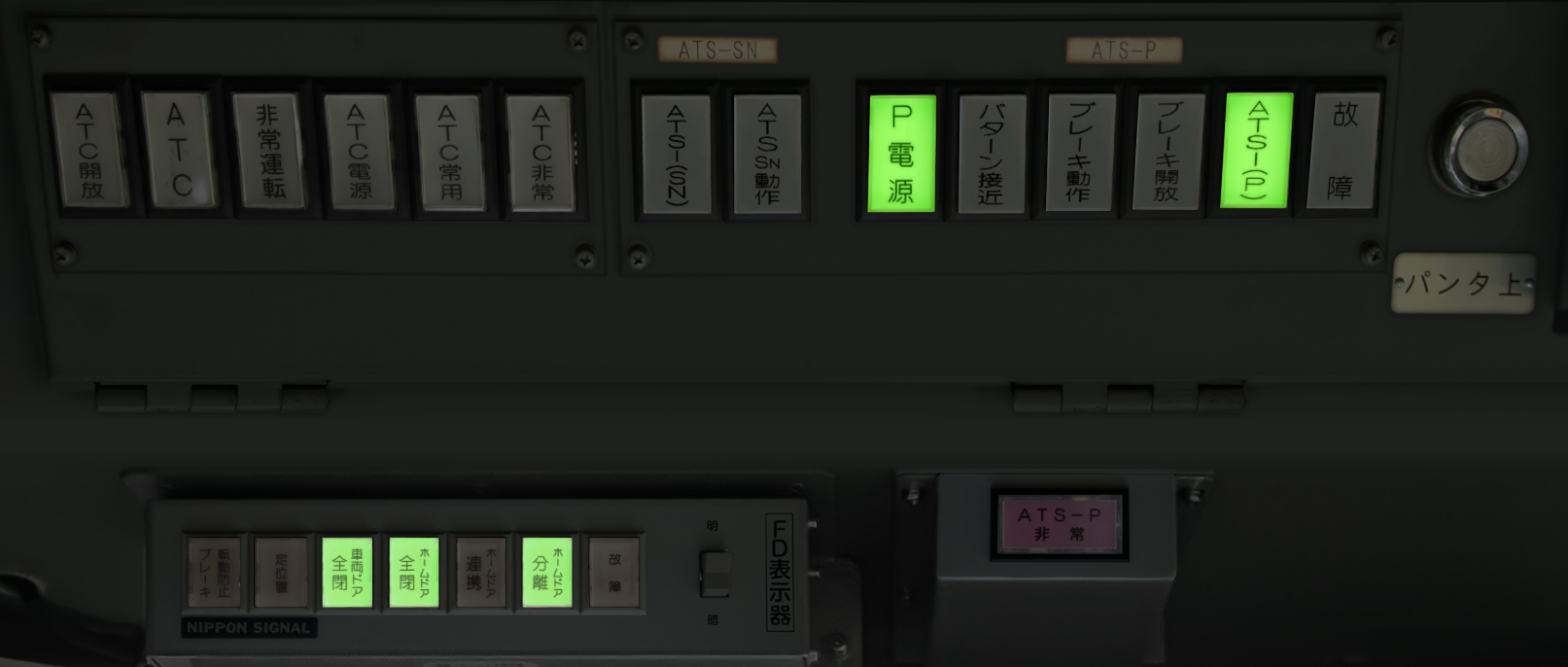E217 series
 (By MaedaAkihiko - CC BY-SA 4.0)
(By MaedaAkihiko - CC BY-SA 4.0)
Introducing
The E217 series (E217系, E217-kei) (E217けいでんしゃ/E217 Keidensha or JR東日本E217系電車/JR Higashinihon E 217-kei densha)is a type of electric multiple unit used for commuter and outer suburban services operated by the East Japan Railway Company (JR East) in Japan since 1994 (Heisei 6) on the Sōbu and Yokosuka lines.
Introduced in 1994 to replace the 113 series EMUs running on the Sōbu (fast) line and the Yokosuka line, it was the first type of commuter train in Japan to feature four pairs of doors per side on the car (at the same time as the 209 series). The basic design was developed from the 209 series commuter EMUs. It replaced all Yokosuka Line 113 series trains in 1999. The trains were built jointly by Kawasaki Heavy Industries , Tokyu Car and JR East (Niitsu and Ofuna plants).
Console details
Above the window are various indicators (requires reframing the cabin to see them).
Here is the list of indicators:
|
Top line:
|
Bottom line :
|
Then, under the window, is the main part.
 On the left-hand side, at the top, there are various indicators:
On the left-hand side, at the top, there are various indicators:
- 3-phases (三相)
- Emergency short-circuit (非常短絡)
- Snow resistant brakes (耐雪ブレーキ)
- Safety Brakes (直通予備ブレーキ)
- ATS (SN)
- ATS (P)
- ATC
- Side doors (貫通扉)
- Cruise control (定速)
Below, on the left, are the brake levels with the emergency brake indicator in red (非常), as well as the brake pressure level (black arrow) and the compressed air reservoir (red arrow).
On the right is the speed dial, emergency stop button (緊急), door-closing light and pocket watch.
On the right-hand side, in addition to the TIMS display, you'll find the train protection radio equipment, the ATS-P power indicator (電源) and a few other buttons.
Consult the MON/TIMS/INTEROS screen page for more details about the MON19 screen. Note that the central section changes presentation from Chiba onwards (horizontal reading -> vertical reading).
Availability
This model is available in these lines:

